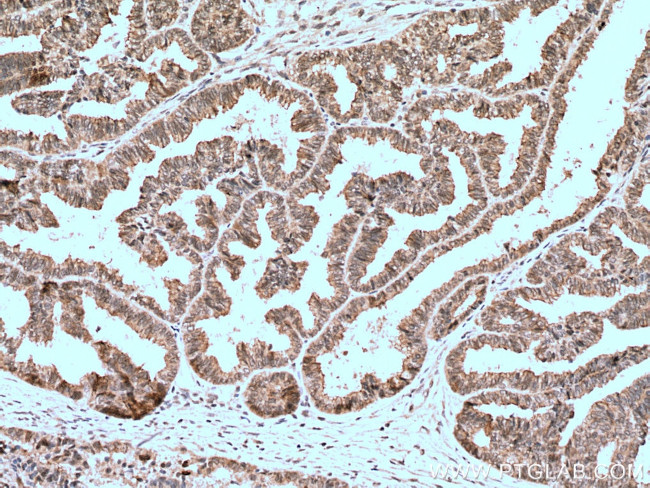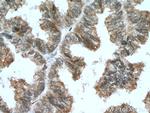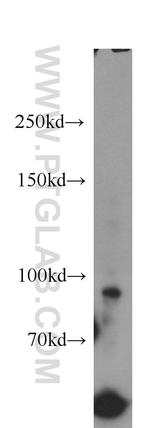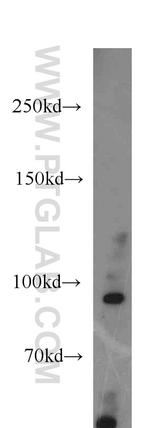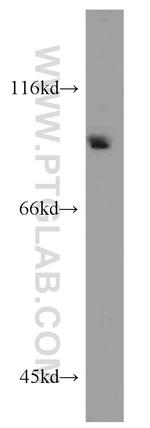Search Thermo Fisher Scientific
产品信息
10398-1-AP
种属反应
已发表种属
宿主/亚型
分类
类型
抗原
偶联物
形式
浓度
纯化类型
保存液
内含物
保存条件
运输条件
产品详细信息
Immunogen sequence: LVEDFGVKG VQVEEIYDLQ SKCQGPVYGF IFLFKWIEER RSRRKVSTLV DDTSVIDDDI VNNMFFAHQL IPNSCATHAL LSVLLNCSSV DLGPTLSRMK DFTKGFSPES KGYAIGNAPE LAKAHNSHAR PEPRHLPEKQ NGLSAVRTME AFHFVSYVPI TGRLFELDGL KVYPIDHGPW GEDEEWTDKA RRVIMERIGL ATAGEPYHDI RF (18-228 aa encoded by BC001596)
靶标信息
BRCA1-associated protein-1, or BAP1, interacts with the RING finger domain of BRCA1. The N-terminal 240 amino acids of the predicted 729-amino acid human protein show homology to ubiquitin C-terminal hydrolases (UCHs), thiol proteases that catalyze proteolytic processing of ubiquitin. In addition, BAP1 contains an acidic region, a highly charged C-terminal region, and 2 putative nuclear localization signals. BAP1 and BRCA1 associate in vivo and have overlapping subnuclear localization patterns. BAP1 enhances BRCA1-mediated inhibition of breast cancer cell growth. Northern blot analysis indicates that BAP1 is expressed as a 4-kb mRNA in all human tissues tested, with A 4. 8-kb transcript expressed exclusively in testis. Northern blot analysis and in situ hybridization reveal that BAP1 and BRCA1 are coexpressed during murine breast development and remodeling. The BAP1 gene has been mapped to 3p21. 3, a region of loss of heterozygosity for breast cancer as well as frequently deleted in lung carcinomas. Intragenic homozygous rearrangements and deletions of BAP1 appear in lung carcinoma cell lines. It has been postulated that BAP1 is a tumor suppressor gene that functions in the BRCA1 growth control pathway.
仅用于科研。不用于诊断过程。未经明确授权不得转售。
生物信息学
蛋白别名: BRCA1 associated protein-1 (ubiquitin carboxy-terminal hydrolase); BRCA1-associated protein 1; Cerebral protein 6; cerebral protein-13; DKFZp686N04275; FLJ35406; FLJ37180; Ubiquitin C-terminal hydrolase X4; Ubiquitin carboxyl-terminal hydrolase BAP1; UCH-X4
基因别名: 2300006C11Rik; AA989761; AW553466; BAP1; HUCEP-13; hucep-6; KIAA0272; mKIAA0272; uch-x4; UCHL2
UniProt ID: (Human) Q92560, (Mouse) Q99PU7
Entrez Gene ID: (Human) 8314, (Mouse) 104416

